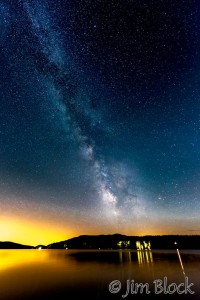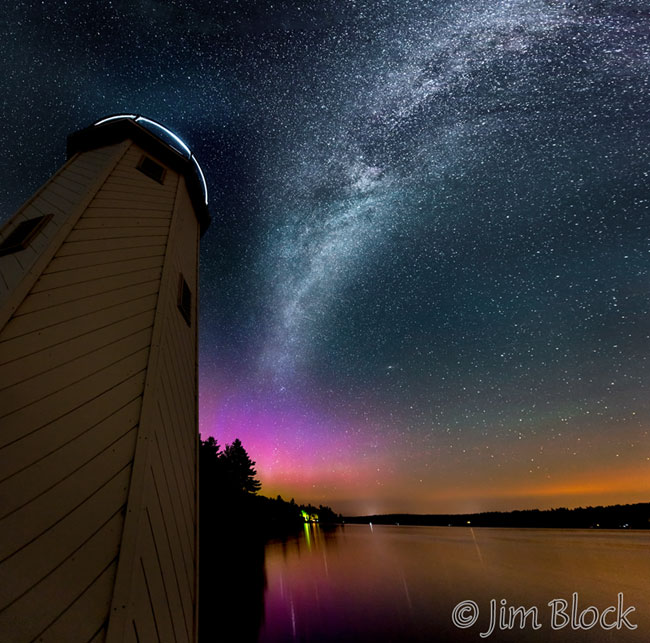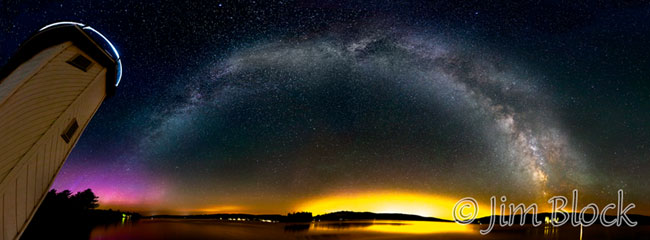It is a bit difficult to admit that one of my favorite recent photos was partly a matter of luck.
I had set my alarm for very early Sunday morning June 8. The forecast was for a clear sky, and I knew the moon would set around the time I got in position, so it should be dark enough to do some Milky Way photography.
My first semi-serious attempt to photograph the night sky was only about 19 months ago. I “discovered” what I already knew – that a modern digital camera can “see” a lot more than the naked eye. Even though I grossly underexposed my photos, I could see the Milky Way in my images. I did not see it with my naked eye, although maybe I didn’t look hard enough.

I made my first trial exposure last Sunday morning at 2:03 AM on Lake Sunapee, shortly after the moon dropped below the horizon. I was aiming south and the southern end of the arc of the Milky Way was clearly visible in my camera monitor. I could also make it out with my naked eye. The yellow glow in the background is from Newbury, NH.
My exposure was 20 seconds at f/2.8, ISO 3200, with a 14 mm lens on a full frame camera body. Over the next 45 minutes I made several series of overlapping photos which I hoped to later stitch together into a full panorama of the full arc of the Milky Way. Most were taken with the camera in the portrait orientation; one series was made in the landscape orientation. Because I was using such a wide angle lens, stitching the individual shots together proved to be quite difficult, especially those shot in the portrait orientation.
It was a beautiful night at the lake. The wind was quite calm and the lake was quiet except for an occasional call of a barred owl and a one-time loon yodel event. It was early in the season so there were relatively few cottage lights on around the lake. It was a very special and exciting experience even before I realized what was happening to the north.
The north? What is that glow at the northern end of the Milky Way in the photo below? It’s somewhat in the direction of the town of Sunapee. But Sunapee is more to the west and it wouldn’t have many lights on this time of night. Could it be that I was actually capturing the Northern Lights? How lucky could I get? The Aurora Borealis is rarely seen this far south and is seldom seen these days as we are in a low of the cycle, or so I’ve read.

I wasn’t sure until I learned later that day that a few other photographers from this area, knowing in advance that an aurora might happen, were out photographing it.
This was perhaps only the sixth time I made a special effort to photograph the Milky Way. I did photograph it early in the evening a number of times last October when I was in the Grand Canyon. But that was early in the evening, before bedtime. No special effort was needed — I just planted my tripod near my sleeping bag. So seeing the Northern Lights one time out of six middle-of-the-night attempts isn’t bad for blind luck. But, as a wise photographer once said, “the harder I work the luckier I get”.
If you click the image below or click HERE you will be taken to a page where you can zoom in and explore the image in detail.

